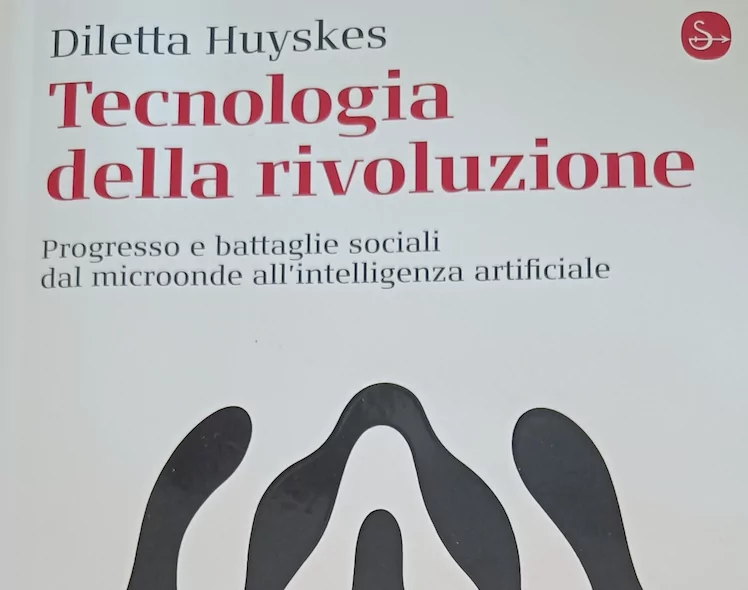A sentence in the concluding chapter of the book written by Diletta Huyskes and titled ‘Technology of Revolution’ can sum up what the author expresses in her work: ‘Innovation requires imagination, but if the imagination is only that of a small and unrepresentative group, it is like living in someone else’s dreams’.
Technology is not inevitable in the way it is formed, grows, is applied; if it is useless to think of stopping technological progress, it is not so to try to ensure that such progress can be capable of bringing true innovation, positive and for all.
The subtitle of the book (Il Saggiatore, 247 pages, 19 euros for the Italian edition) reads: ‘Progress and social struggles from the microwave to artificial intelligence’ and is a collection of reflections, quotations and insights that highlight how the technology should be considered in a completely new way. The risk, argues the author, is both that of accepting technological tools that are only effective in relation to the process that developed them and the result of the compromises that allowed them to become accessible to all or at least many, and that of considering technologies as substitutes and not complementary to the role of man, the mistake here being to transfer responsibility for decisions to technologies and rely entirely on what they produce in terms of output. This leads to a potentially very dangerous drift that coincides with a deresponsibility in relation to the decisions taken: ‘the computer says no’, on the one hand, and with the fact that the more technologies have an impact on society, the more their possible errors have an impact on a very large number of people, which would not normally be the case if the error were human, with the exception of the power exercised by a head of state, for example.
To analyse this scenario, Huyskes refers to numerous publications and experiences over the years that have dealt with feminism, marginalisation, but also with the determinism and constructivism of technologies in their relation to society. There is no shortage of concrete examples that the author brings to the reader’s attention, such as the development process of the microwave oven, the adoption by authorities in the Netherlands of software systems designed to prevent dangerous social drifts on the part of certain categories of citizens but which turned out to be highly discriminatory as well as dangerous from the point of view of the inability to make untrue predictions. Here, according to Huyskes, two elements come into play: the relationship between society, societal history and technologies, and the fluidity of information that coincides with its ability to change over time.
The risk is that of applying new technological tools to principles that are, however, so ingrained in humanity’s being that they permeate every new promise of technological revolution, thus falling back into the perversion of continuing to make the same mistakes but on an ever larger and faster scale. We need to take up the history of technologies and look at it from a social point of view, we need to identify that point in evolution where technological progress can also lead to social progress, which is not happening today. Even the most recent technologies such as generative AI are victims of this drift, just take an example that the author cites in the book and ask the AI to represent a person doing household chores, as a result you will have a woman, perhaps not white drawn in an environment such as the kitchen, when according to the statistics cited in the book men appear to be just as numerous in performing these tasks.
ALL RIGHTS RESERVED ©
